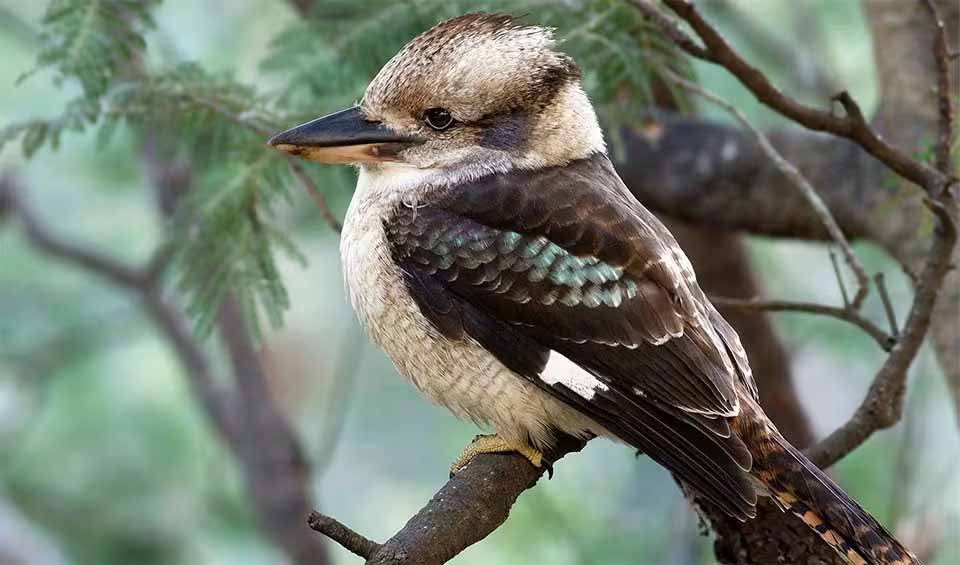An iconic symbol of the Australian outback, celebrated for its raucous laughter-like call and unique hunting behaviors. This distinctive bird, belonging to the kingfisher family, is renowned for its unmistakable vocalization, which often echoes through the bushland at dawn and dusk, earning it the affectionate nickname of the “laughing kookaburra.”
Beyond its vocal talents, the Kookaburra possesses remarkable hunting skills that make it a formidable predator in its natural habitat. As a carnivorous bird, the Kookaburra preys on a variety of creatures, including lizards, snakes, insects, and small mammals. Its hunting technique is characterized by a sit-and-wait strategy, where it perches patiently on a branch or elevated vantage point, scanning the surroundings for potential prey. Once a target is spotted, the Kookaburra swoops down with impressive agility and precision, using its strong beak to capture and dispatch its quarry.
In addition to its role as a skilled predator, the Kookaburra holds significant cultural and spiritual importance in Australian folklore and indigenous traditions. In many Aboriginal cultures, the laughter-like call of the Kookaburra is believed to herald the dawn, symbolizing the beginning of a new day and the promise of positive change. Consequently, the bird is often regarded as a harbinger of good luck and prosperity, with its presence in the landscape seen as a sign of auspiciousness.
Interestingly, the Kookaburra’s influence extends beyond its native habitat, as it has captured the imagination of people around the world through various cultural depictions and references. Its distinctive call has been immortalized in literature, music, and popular culture, becoming synonymous with the Australian wilderness and evoking a sense of nostalgia for the country’s rugged landscapes.
Distribution
 Australia
Australia Indonesia
Indonesia Papua New Guinea
Papua New GuineaAnything we've missed?
Help us improve this page by suggesting edits. Glory never dies!
Suggest an editGet to know me
Terrestrial / Aquatic
Altricial / Precocial
Polygamous / Monogamous
Dimorphic (size) / Monomorphic
Active: Diurnal / Nocturnal
Social behavior: Solitary / Pack / Herd / Flock
Diet: Carnivore / Herbivore / Omnivore / Piscivorous / Insectivore
Migratory: Yes / No
Domesticated: Yes / No
Dangerous: Yes / No





